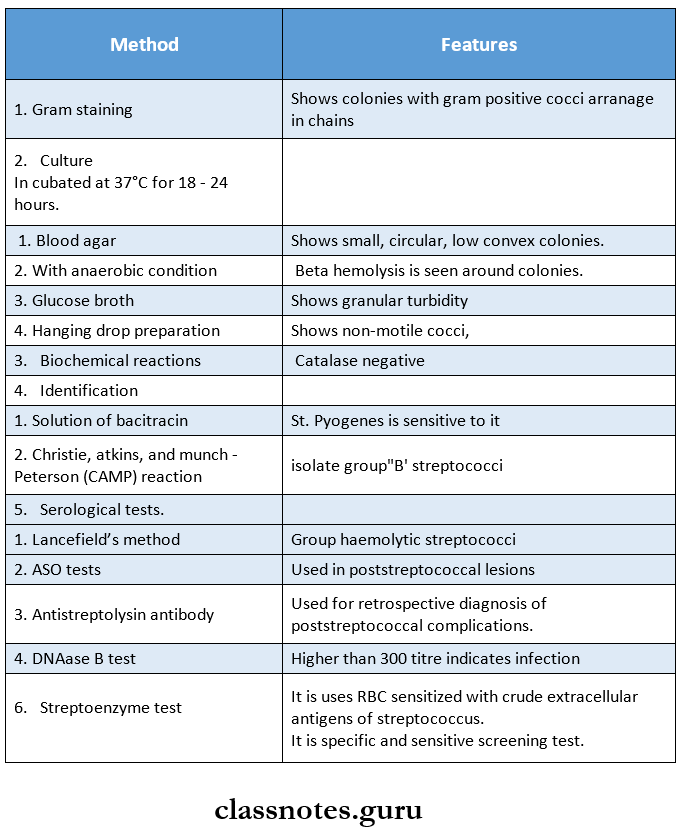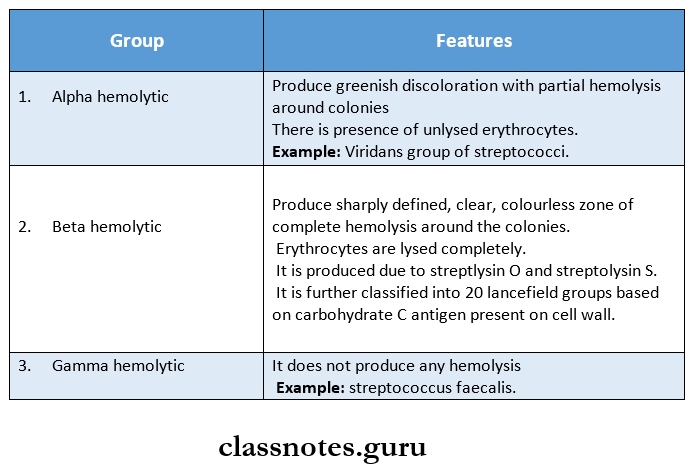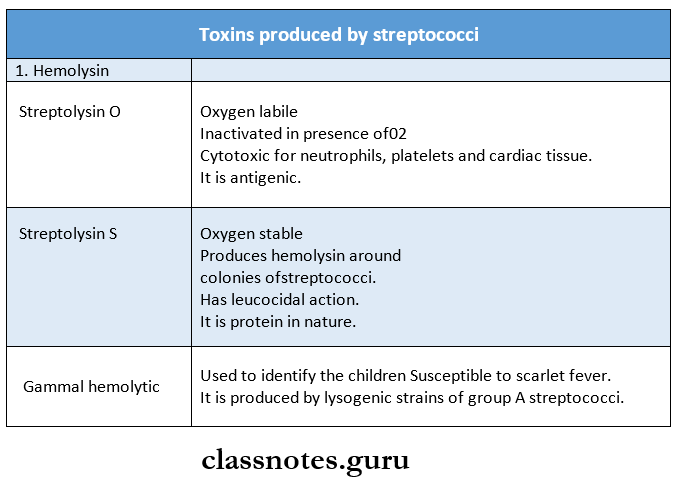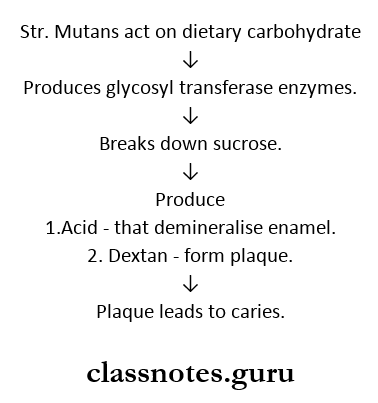Streptococcus Long Essays
Question 1. Write in detail about the morphology, pathogenesis, laboratory diagnosis, and treatment of streptococcus pyogenes.
Answer:
Streptococcus Pyogenes:
- Morphology:
- Streptococcus pyogenes are:
- Gram-positive are:
- Non-sporing.
- Non-motile.
- Capsulated.
- Aerobe and facultative anaerobe organism.
- Size – 0.5 – 1 micrometer in diameter.
- Shape – spherical or oval.
- Arrangement – arranged in a chain.
- It occurs due to successive cell divisions occurring in one plane only.
- Streptococcus pyogenes are:
Read And Learn More: Microbiology Question and Answers
Streptococcus Pathogenesis:
- Streptococcus Pyogenos adheres to the pharyngeal epithelium by means of lipoteichoic acid covering the surface epithelial cells.
- The infection may spread to the surrounding tissues leading to suppurative complications.
- Otitis media.
- Mastoiditis.
- Quinsy.
- Ludwig’s angina.
- Suppurative adenitis.
- Rarely meningitis.
- Scarlet fever occurs which leads to sore throat and a generalized erythematous rash.
Streptococcus Laboratory Diagnosis:

Streptococcus classification
Streptococcus Treatment:
- Penicillin G – is the drug of choice for all streptococcal infections.
- In the case of a patient allergic to penicillin, erythromycin or cephalexin is used.
Question 2. Classify streptococci. Describe the toxins and lesions produced by β-hemolytic streptococci.
Answer:
Streptococcus Classification:
Streptococci are classified as follows:
1. Based On O2 Requirement.
- Aerobic and facultative anaerobes.
- Obligate anaerobes
- Example: peptostreptococcus.
2. Based On Hemolytic Properties.

Toxins Produced By Streptococci:

Streptococcus characteristics
Lesions:
1. Pyogenic Infections:
- Respiratory infection.
- The throat is the primary site of invasion causing a sore throat
- Tonsilitis – localized in tonsils.
- Pharyngitis – involves the pharynx.
- Pyogenic complications like otitis media – are caused by the spread of streptococcal infections to surrounding tissues.
- Streptococcal pneumonia.
- The throat is the primary site of invasion causing a sore throat
- Skin and soft tissue infections.
- Cause suppurative infections of the skin. Examples are wounds, burns, cellulitis, and lymphangitis.
- Typical skin infections include.
- Erysipelas – It is a diffuse infection involving superficial lymphatics.
- Impetigo – leads to glomerulonephritis in children.
- Genital infection includes puerperal sepsis.
- Other infections.
- Includes sepsis, pyemia, septicemia, and abscess of internal organs.
2. Non-Suppurative Complication.
It includes:
- Acute Rheumatic Fever.
- It is preceded by a sore throat
- It is characterized by fever, pancarditis, migratory polyarthritis, and sometimes chorea and subcutaneous nodules.
- Repeated attacks are common.
- It shows a marked immune response.
- Acute Glomerulonephritis.
- It is preceded by a skin infection.
- It is self-limiting and resolves without any permanent damage.
- Pathogenesis may be due to antigenic cross-reaction between glomerular antigens and some components of nephritogenic streptococci.
- It shows’s moderate immune response.
Question 3. Enumerate the etiology of sore throat. Describe the pathogenesis and complications of streptococcus pharyngitis.
Answer:
Sore Throat:
Sore Throat is an acute tonsillitis/ pharyngitis
Sore Throat Etiology
- Bacteria
- Streptococcus pyogenes
- Streptococcus groups C and G
- Corynebacterium diphtheria
- Haemophilus influenza
- Bordetella pertussis
- Treponema vincentii
- Fungus
- Candida albicans
- Viruses
- Epstein Burr virus
- Adenovirus
- Coxsackie virus A
Streptococcus Pathogenesis:
- Streptococcus is the leading cause of pharyngitis
- Cell surface accounts for its virulence
- It is concerned with colonization and evasion of phagocytosis and host immune responses
- The surface contains capsular polysaccharides, cell wall peptidoglycan, lipoteichoic acid, surface proteins, and cell bound streptokinase
- Cytoplasmic membranes contain antigens that suppress host immune system
Streptococcus Pharyngitis Complications
- A sore throat may lead to rheumatic fever
- It is characterized by inflammation of joints and/or heart following streptococcal pharyngitis
Streptococcus pyogenes
Streptococcus Short Essays
Question 1. Enzymes of streptococci.
Answer:
Enzymes:

Question 2. Cultural characteristics of streptococcus.
Answer:
Streptococcus is an aerobe and facultative anaerobe.
- It best grows at 37oC and pH – 7.2 – 7.4
- Growth occurs only in media enriched with blood, serum or sugars.

- Virulent strains in isolation produce finely granular colonies.
- Avirulent strains form glossy colonies.
- Strains with well-marked capsules form mucoid colonies.
Question 3. Discuss streptococci under the following heading-Dental caries
Answer:
Streptococci Dental Caries:
- Dental caries is caused by Str. Mutans.
- It produces an enzyme called glucosyltransferase
- This enzyme breaks down dietary sucrose production.
1. Acid
- It leads to the demineralization of the tooth enamel and the initiation of carious lesions.
2. Dextran.
- It binds together with food debris, mucus, epithelial cells, and bacteria to form plaque.
- This plaque leads to dental caries.
- Once the caries process is initiated, it progresses by lactobacilli.
- Other streptococci involved are.
- Str. Milleri.
- Str. Sangus.
- Str. Salivaris.
- Str. Mitior.
Streptococcus infections
Question 4. Viridans group of streptococci.
Answer:
- Viridans group of streptococci produces alpha hemolysis on blood agar.
- They are commensals of the mouth and upper respiratory tract.
Streptococci Included In Viridian Group:
- Str. Mitis group.
- Str. Anginosus group.
- Str. Bovis group.
Each group contains many species.
Diseases Caused By Them:
They are usually non-pathogenic but can cause disease.
1. Dental Caries.

2. Subacute Bacterial Endocarditis.
- Predisposing factors are valvular heart diseases, congenital heart diseases, and cardiac surgery.
- Following tooth extraction, transient bacteremia occurs.
- This gets implanted on damaged or prosthetic valves.
- They form vegetation.
Subacute Bacterial Endocarditis Prevention:
- Prophylactic antibiotics should be given before extraction.
- Antibiotic sensitivity must be determined.
- Caries preventive measures should be carried out.
Question 5. Antistreptolysin O test.
Answer:
Antistreptolysin O test is a toxin neutralization test used to detect the presence of antistreptolysin O in the patient’s sera.
Antistreptolysin O:
- It is an antitoxin secreted by the body against the exotoxin streptolysin O of streptococci.
- It blocks the hemolysis caused by streptolysin O.
Antistreptolysin O Value:
- Higher than 160 or 200 titer – indicated prior strepto-coccal infection.
- Higher level – indicates acute rheumatic fever.
Antistreptolysin O Uses:
- Aid in the diagnosis of rheumatic fever and acute glomerulonephritis.
- Used for retrospective diagnosis of streptococcal pyoderma.
Streptococcus Short Questions And Answers
Question 1. Streptococcal infections.
Answer:
1. Pyogenic Streptococcal Infections.
- Respiratory infections.
- Sore throat
- Tonsillitis
- Pharyngitis.
- Skin and soft tissue infections
- Wounds
- Burns.
- Lymphangitis
- Cellulitis
- Erysipelas.
- Impetigo.
- Genital infections – puerperal sepsis.
- Other infections.
- Septicaemia.
- Pyaemia
- Abscess of internal organs.
2. Nonsuppurative Complications.
- Acute rheumatic fever
- Acute glomerulonephritis.
Question 2. Virulence factors of streptococci.
Answer:

Streptococcus structure
Question 3. Write briefly on gram-positive cocci.
Answer:
Gram-positive cocci are those that resist decolorization and retain primary stain-appearing violet.
Gram-Positive Cocci Examples:

Question 4. Alpha hemolytic streptococci.
Answer:
- Produces greenish discoloration with partial hemolysis around colonies
- The zone of lysis is small
- There is the presence of unlysed erythrocytes.
- They are normal commensals in the throat and may cause opportunistic infections rarely
- They are classified into species by physiological and biochemical properties
- Example: viridian’s group of streptococcus
